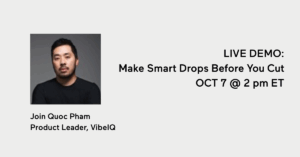Retail brands have traditionally viewed Merchandise Financial Planning (MFP) as a foundational cornerstone for their success. MFP tools effectively set financial targets, align high-level assortment strategies, and help manage forecasts and inventory. Yet, even brands with excellent merchandise planning practices often find themselves wrestling with chaotic, inefficient processes immediately after planning ends.
Why does this happen—and what’s the solution?
Let’s unpack the critical gap in the go-to-market process that most retail brands overlook, and explore how a new type of platform can bridge this gap, unlocking greater profitability, agility, and accuracy.
Merchandise Planning Tools: Great at Strategy, Limited in Execution
At their core, merchandise financial planning tools excel at defining financial goals, managing budgets, and setting initial assortment strategies. They forecast seasonal demand, manage inventory, and establish clear, measurable targets. However, their capabilities stop there.
They aren’t designed to support the intricate, detailed, and highly collaborative work that occurs after financial and strategic assortment planning ends—when actual products must be conceived, designed, iterated, and finalized.
Identifying the Chaos After Planning Ends
The moment the MFP process wraps up, the smooth strategy-making gives way to chaos. Merchandising, design, product, and B2B sales teams resort to using disconnected tools like PowerPoint decks, spreadsheets, emails, Slack messages, and digital whiteboards like Miro to handle the complexities of actual product creation, adoption and sell-in.
These fragmented tools mean teams lack real-time visibility into product line decisions, changes, and market influences. Information gets trapped in siloed systems and files, causing widespread confusion and misalignment. As a result:
- Decisions become delayed, product iteration slows down, and agility suffers.
- Late-stage changes become more frequent, increasing sampling costs and reducing margins.
- Final assortments stray from original financial targets, causing missed sales goals or markdowns.
In short, the aftermath of merchandise planning often devolves into a costly, confusing mess.
Understanding the Critical Go-To-Market Gap
The critical gap we’re highlighting exists between strategic merchandise planning and final product creation. This stage requires intensive, iterative collaboration and relies heavily on real-time product data, market trends, and historical sales insights—none of which traditional MFP systems provide.
In this stage, teams need:
- Real-time visibility into evolving product visuals and details.
- Collaborative tools that unite merchandising, design, product, and sales teams around shared, accurate product data.
- Immediate access to historical sales performance and current market data to shape timely decisions.
Without these capabilities, brands risk expensive, last-minute adjustments, poor sell-through, and assortments that don’t align closely with the strategic objectives set during planning.
Filling the Gap: Introducing the Assortment Lifecycle Platform
Enter the Assortment Lifecycle Platform—a new software category designed specifically to bridge the critical gap in the go-to-market process. Platforms like VibeIQ deliver precisely what traditional merchandise planning tools inherently lack: real-time product visuals, robust data-driven collaboration, and unified visibility into assortment development across all stakeholders.
VibeIQ’s Assortment Lifecycle Platform acts as a central hub and single source of truth, transforming the strategic intent from your merchandise plans into actionable, profitable assortments. With VibeIQ, fashion brands can:
- Make quicker, better-informed decisions on product assortments, significantly reducing costly delays and improving agility.
- Efficiently iterate product designs, assortment strategies, and line plans based on immediate visual insights and timely market feedback.
- Substantially decrease sampling expenses, minimize late-stage product changes, and prevent costly scrappage, resulting in improved margins.
Real-Time Collaboration and Visibility in Action
Imagine this scenario: your design team notices a rising trend mid-way through assortment planning, supported by real-time market data. Instead of relying on lengthy email threads, outdated spreadsheets, or static presentation decks, they instantly alert merchandising colleagues within the digital workspace.
Teams immediately see updated product visuals, historical sales performance for similar products, and market analytics—all in real-time. Merchandisers quickly adjust the assortment strategy, adding the new style seamlessly, aligning the final assortment more closely with market demands and financial goals.
This agility and alignment mean higher sell-through, lower markdowns, and more predictable profitability.
How VibeIQ Complements Merchandise Planning Tools
Importantly, VibeIQ isn’t here to replace your existing merchandise planning tools—it complements and extends the value your MFP tool. Your planning tools set critical financial and strategic benchmarks. VibeIQ ensures these strategic plans become reality through collaborative product creation, real-time iteration, and transparent visibility for every stakeholder involved.
This ensures that the financial and strategic intent defined during MFP translates directly into the products your customers want, improving your business results.
Bridging the Gap for Greater Go-To-Market Success
Brands can no longer afford to overlook the gap between merchandise planning and product development. Closing this gap with an Assortment Lifecycle Platform like VibeIQ transforms chaotic, disconnected processes into streamlined, agile workflows.
The benefits are immediate and measurable:
- Improved alignment of final assortments with financial plans.
- Reduced costs from sampling, scrappage, and late-stage product adjustments.
- Faster reaction times to emerging market trends and consumer demands.
By addressing this critical gap, brands position themselves to deliver higher-performing assortments that consistently hit strategic goals.
Ready to bridge the gap in your go-to-market process? Schedule a demo or request a consultation to discover how VibeIQ can transform your product development workflows today.



